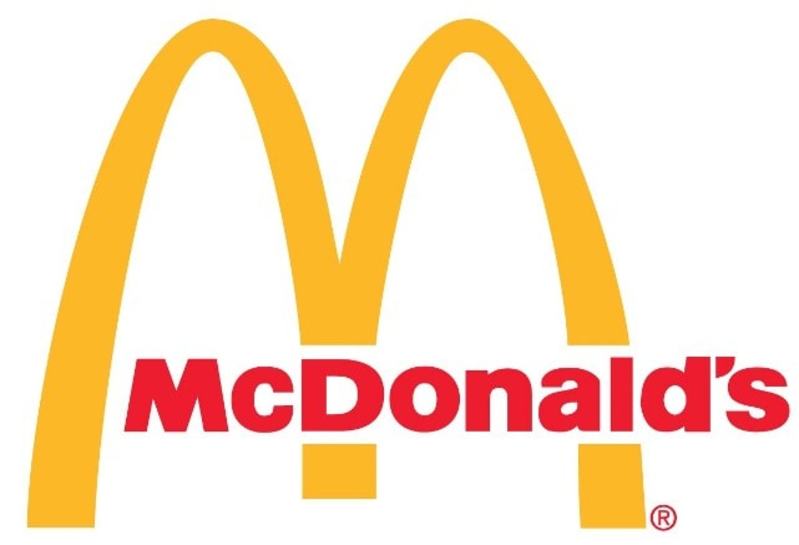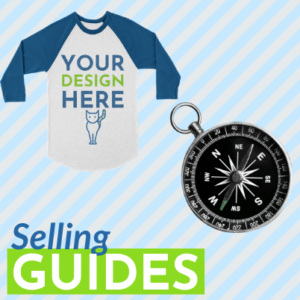How To Use Your Brand Logo To Your Advantage
Look around you. We bet you can find at least one logo, whether it is on your phone, laptop, pen, or a coffee cup. In this article, we will walk you through everything you need to know about branding.
Why having a logo is important for a small business?
When customers come in contact with your brand, the first thing they usually notice is the logo. Logos convey the essence of a brand’s mission and values. You need a logo to:
Draw attention: An overabundance of information has led to short attention spans.
Stand out: Unique logo should differentiate a brand from the competition.
Provide recognition: The logo paints an overall image of a brand.
Establish authenticity: The logo guarantees authenticity of a brand.
Where can you use a logo?
Large corporations use logos and slogans everywhere, from packaging to marketing. Keep in mind that you don’t need to have it all figured out to use the power of branding. Let’s take a look at how you can use logos to your advantage.
Online
A strong online presence is one of the most inexpensive and effective ways of marketing. After all, there are a variety of ways to present your brand to your customers. It can range from the profile picture on Instagram to the signature in an email.
- Website or Blog: add your logo next to the main elements for example near the slogan, about page, or customer reviews.
- Favicon AKA (shortcut icon): the icon that appears next to the site name in the browser is especially convenient when the user has many tabs open.
- Profile Pictures on Social Networks: add your logo as a profile photo on Facebook, Twitter, Instagram, Pinterest, and LinkedIn.
- YouTube: if you have a channel, upload your logo as the main image and use it as a watermark to protect your content against theft.
- Advertising Banners: when making up a banner for advertising on the web.
- Email Newsletters: include the logo in the signature.
- Photographs: use a trademark to protect copyrights.
- Guest Posts: when posting on blogs other than your own, this is a fantastic opportunity to brand your content and link it back to your blog.
Marketing

When you see the giant letter “M” on the side of the highway, you are likely to recognize the popular fast-food chain. Ain’t that right? A logo is a powerful tool in attracting new and returning customers. Put yourself in your client’s shoes: choose appropriate marketing materials based on where your customers hang out.
- Office Signs
- Outdoor Advertising: billboards
- Company Cars
- Stationery: business cards, calendars, booklets, magazines, flyers, posters, notebooks, pens, envelopes, and postcards
- Clothes and Accessories: t-shirts, caps, hats, jackets, bags, backpacks, umbrellas, phone and tablet cases
- Souvenirs: magnets, cups, and key chains
Products
If you decide to use a trademark in the design of your products, be sure to understand when and where your customers come across your brand.
- Product: inscription on the label, embossed letters, or drawing
- Packaging: paper, bag, box
- Accessories: ribbons, stickers, tape for packaging
- Printing Products: manuals, postcard, business card
Let’s analyze your logo. You ready?
Here are 7 questions to help you validate your logo.
1. Can you describe your logo in a short sentence?
It is important for the company symbol to be easily understood and remembered, so anyone who has not yet seen the logo can describe it without a problem. Here are some examples: “the three stripes”, “a crocodile with its mouth open”, and “a bird that feeds the chicks in the nest”.
Previous
Next
2. Can you rebrand if necessary?
What happens when your business expands? You may be faced with the need to rebrand in the future, in that case you may want to make sure to align your branding with the growth and still maintain somewhat similar image. Take a look at Mercedes-Benz and how they have handled rebranding over the years.

3. Is your logo scalable?
You may encounter a situation where you need to scale your logo. Make sure it is legible and recognizable.
4. Does your logo contain any special characters?
Do you ever get so wrapped up in your head that you find it hard to see a problem? Take a step back and analyze your logo. The simpler it is, the better it will perform. Nowadays, logos tend to get simplified to their core.
5. Does your logo resemble a Picasso or Da Vinci masterpiece?
Leave the beautiful and intricate drawing at the door. Your task is to create a logo that is easy to remember. The basic rule: a child should be able to draw a replica without any problems.
6. How does your typography look?
Take a look at our Typography Guide to learn more about kerning (spacing), alignment options, and other typography related topics to help you get a better idea of what elements form a great logo design.
7. Does your logo portray core values of your brand?
The logo is the main element of a brand. It is important for your audience to feel the presence of brand values, whether it is the original name, color, slogan, or something else.
Take this with a grain of salt, some of the best-recognized companies do not follow the 7 steps above. We say it all the time: TEST, TEST, TEST. Testing is the only way to know what works and what doesn’t.
Having analyzed all of the above:
- develop an element, understanding the basics of composition, harmony and color compatibility
- forget about the cliche. A plane symbol for an airline company is too common.
- avoid “bulk” images. The modern design strives for simplicity.
- remove small parts. The modern logo is concise and not overloaded.
How to use your logo properly

Proper use of the logo provides customers with better experience. Here are some tips on how to achieve a proper brand recognition.
Create a Brandbook
Brandbook is a logo guide that contains proportions, primary and secondary colors, use on various backgrounds, on the Internet and outdoor advertising. Also, the brand book indicates how the brand name cannot be used. Here is a page from NASA’s Brandbook:

Use your logo often
Modern customers go through many interactions with a brand before they decide to make a purchase. For example, a customer needs to notice an outdoor advertisement, read up on reviews, watch a story on Instagram, or talk to customer service. The visual components, including the logo, are very important in this process. Add your logo to as many places as possible to improve recognition.
Make it legal
When you go viral, you may run into a problem. We recommend registering the trademark with the logo at the US Patent and Trademark Office now.
Learn from industry leaders
Analyze top performers in your industry to get ideas for your brand – add value, modify but never copy what has already been done. Put your own spin on it.
Play into emotions
Be real, promote your brand’s story and a good deed. For example, one of the airlines gives passengers branded umbrellas at the exit from the aircraft in case of rain in the country of arrival. Caring forms a positive brand image. Logo adds to the good deed and thus makes the company more memorable.
Examples: Give away a percentage of proceeds to someone in need or to an organization, the choice is yours.

Where and how to use your logo in your sales funnel?
Every customer goes through steps to get to the end of the funnel (purchase). For example, for an ecommerce site, that would be:
- Facebook Ad
- Site
- Browsing
- Order
- Confirmation “Thank you”
- mailing of special offers and news.
Each brand has its own sales funnel. Each step of the funnel should have a clear branding. The higher the competition in the niche is, the greater the importance of branding is.
- Imagine that you are your customer. Visualize several different options of sales funnels, go through all the stages a customer has to go through to get to the end of the funnel (for example, advertising, online search, recommendations, etc.)
- Go through a competitor’s sales funnel, evaluate the pros and cons of the process, especially the frequency of a logo usage
- Determine the usefulness of a logo at different stages of your funnel based on the emotions of the potential customer
Conclusion
The logo is an important element of marketing. The right one will help increase your brand’s awareness and gain the customers’ trust.
Don’t have a logo yet? Go to Logaster and create your new logo just in a few clicks. It’s that simple.


